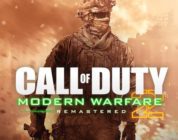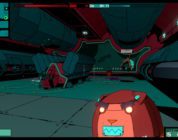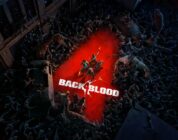Welcome to Minion Babysitter Simulator 2020 edition, where you are not quite sure what is going on at first; it’s like raising children for first-timers, just the babies are robots. All jokes aside, Disintegration is a first-person real-time strategy game with shooter mechanics. Disintegration was originally announced in July of 2019 and a public multiplayer beta test was held in January of 2020. The first time we saw Disintegration at an event was at PAX East 2020. During a hands-on demo held at the Private Division booth, we were thrown into 5v5 combat with little explanation. Three months have passed since our hands-on preview with Disintegration and our opinion of the game has definitely changed.
At Pax East, Disintegration seemed a bit too chaotic with too much going on at once; we were required to capture the objective, control units, and shoot at enemy combatants. If you think that this is a cakewalk, then start Disintegration‘s campaign on Outlaw difficulty. You will be in for an interesting time. Prior to the game’s official release, the multiplayer has been rather inactive so we will only be covering the single-player elements.
Gameplay
The Disintegration campaign focuses on Romer Shoal, a robot Gravcycle pilot. The campaign takes place 150 years into the future. Following a complete collapse of society due to climate change, a group of scientists develop a technique to transfer a human brain into a robotic body in order to reduce the strain on Earth’s resources; the process is known as “integration”. While integration is meant to only be temporary in nature, a militant group named Rayonne has utilized the technology and become a superpower. Now in control, the Rayonne are forcing all humans to conform to the integration process.
The campaign follows a group of outlaws, reluctantly led by Shoal. Most of the members have already “integrated” and are rebelling against the Rayonne to “reboot humanity”. As the Outlaws seek to dismantle the Rayonne’s dominance, they must retake strategic locations. Along the way, the team meets other resistance fighters and finds a traitor in their midst. Disintegration features four difficulty levels: Story, Recruit, Maverick, and Outlaw. The varying difficulties determine how much damage the player takes, how much damage the player deals, and how the player will need to utilize their units to survive. In Story Mode, the emphasis is to explore and to easily kill enemies; it allows the player to experience the story with minimal effort. Outlaw emphasizes using all abilities at the player’s disposal. The player must overcome the AI having increased healing, survivability, damage output, and awareness. Outlaw mode isn’t for the faint of heart. Even with complete upgrades it can be rough.
Each mission the player is equipped with a mission-specific Gravcycle and select characters to accompany them. This can make leveling units and preparing for future missions rather difficult. During missions, if the player’s units go down, they must pick up their brain can in order to revive them; the units can die countless times but if the Gravcycle is destroyed, the player fails the mission. Each unit has its own unique ability. The four abilities most utilized in story mode are a slow field, concussion grenade, rocket barrage, and a power slam.
The campaign is comprised of twelve missions that took us over 10 hrs to complete just on recruit difficulty; each mission takes roughly 30 minutes to an hour. If you are looking for a challenge and something to take up time, Disintegration‘s Outlaw difficulty will eat up time and push your limits. Most of the acting within the story is pretty decent, however, some of the voices feel a bit too robotic. Obviously, they are robots but these robots still have human minds. Some of the characters lack emotion and feel rather hollow. The overall story of Disintegration is nothing out of the ordinary; it is a story of resistance, betrayal, and overcoming adversity. In the end, you get that heartfelt moment and the final battle will have your heart racing.
Controls
Disintegration‘s controls are not the easiest to master. Like most first-person shooters the player can press the right trigger to shoot, the right stick allows the player to zoom in to aim and the Y button allows players to cycle between their two attachments. The A button allows the players to boost in a variety of directions but takes time to recharge after each use. The B button enables the tactical visor that helps the player spot enemies while out of range, check the mission objectives, and check the amount of salvage and upgrade chips that have been obtained. The right bumper tells the player’s units where to go or who to attack; sadly it does not tell the AI units to hide behind cover to attack the enemies. The unit’s special abilities are activated by using the directional pad and confirming the command with RB. The player is able to control the elevation of the Gravcycle using the left trigger (down) and left bumper (up).
The game’s controls feel a bit too complicated. Although the game offers a training mode, it took us a few hours to get used to them.
 Music/ Sound
Music/ Sound
When trying to describe Disintegration‘s soundtrack the first two games that come to mind are Skyrim and Destiny. The sound effects feel similar to Halo and Destiny. You can easily tell where the enemies are shooting from and where an enemy dropship is landing. The enemies are rather quiet despite the overarching villain making his presence known. As we mentioned earlier, the voice acting in the game is enjoyable but at times feels emotionless. Yes, most of the characters are robots but they still have human brains. This causes a slight conflict with the narrative, but can potentially be explained through a narrative point. In theory, the date of integration could explain why certain characters feel more robotic than human.
The backtrack in the game gives a mystic voyage kind of feel, similar to The Elder Scrolls like a grand adventure. During our playthrough, we only had one audiovisual issue and that occurred when we pushed the Xbox home button. Once we returned to the game everything came rushing to try and catch up with the video that still kept going despite being tabbed out. The humor in certain characters’ lines definitely eased the tone and brought a human element to the robots.
Graphics
Disintegration may not have state of the art graphics but you can at least discern what each object is. The player’s immediate vicinity is rather well-defined but objects in the distance aren’t as distinct. Each unit is clearly distinguishable, making enemies and allies easy to tell apart. Some of the environment is destructible, which gives a great feeling when you kill enemies by blasting through walls and such. If you are looking for the next CyberPunk 2077 then you are not in luck, but if you are looking for graphics like Destiny 1 on Xbox One and PlayStation 4 then you are in luck. For a 9GB game, Disintegration looks better than expected.
 Replay Value
Replay Value
As we stated at the very beginning, this is a single-player review. We will update the review after the multiplayer has gone live. Disintegration‘s campaign will have you coming back for more. Yes, the missions are long, but there is a night and day difference between Recruit and Outlaw that will make you think you played two different games. The more salvage and chips you gather during your first playthrough makes an Outlaw playthrough easier.
For a AA title, DIsintegration is an unexpected surprise. For a game with such a small file size, the maps were bigger than expected; additionally, the special effects in the game had a higher resolution than expected for such a small file size. The game’s graphics might not be state of the art but they are still good; in fact, they were better than what I was expecting coming out of the PAX East demo. The sound effects were immersive and drew me into Disintegration‘s world. Compared to Destiny, Disintegration does not overwhelm you with sound effects and allows you to focus on the here and now rather than what is potentially lurking down the road. Yes, a scenic atmosphere is important but when it becomes overwhelming, the focus starts to dwindle. This game finds a way to balance it where other AAA titles fail. The main character’s voice acting reminded me of Nathan Fillion in Firefly and Destiny which made me feel more connected with the character.
For those who might be on the fence about purchasing Disintegration let me just say this. I personally go out of my way to avoid real-time strategy games; for whatever reason, controlling units and commanding them to go places causes me to shut off my brain. The only game I have ever been able to focus a long time on is Age of Empires. Disintegration is only the second RTS title to keep my attention for a long period of time. If you are still in doubt, watch streams or multiplayer videos but I can say that Disintegration is worth the $49.99 USD price tag. If down the line it is on sale for under $30.00 then it will be a steal. Honestly, Private Division did a great job with Disintegration and exceeded all of my expectations. Hopefully, if the game is successful they will release DLC expanding the story and add additional units.
More information about Disintegration can be found on the official website. A digital Xbox One copy was provided for the purpose of review.
For more action reviews, check out my review for Call of Duty: Modern Warfare 2 Campaign Remastered on PS4. I also recently played through the new Xbox One port of Bayonetta, the hack-and-slash classic.
All Red Text is an edit from 6/25/20








